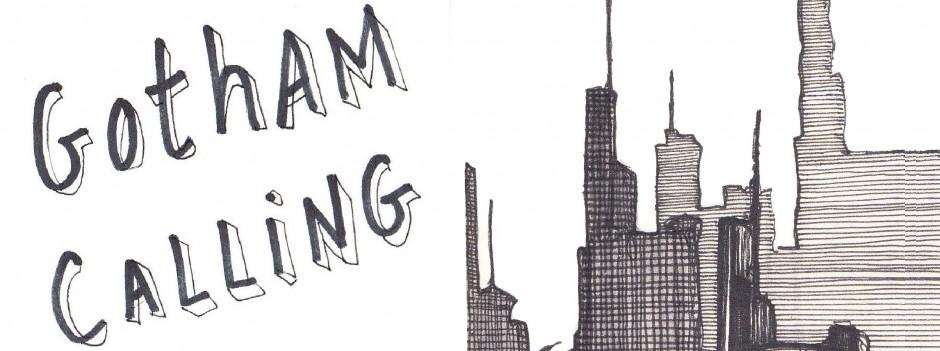Last time I did one of these lists of crime movie recommendations, I focused on offbeat thrillers, as I felt the current crop on offer felt too formulaic (at the time, I still hadn’t watched – and loved – Anora, a wicked response to Pretty Woman, seemingly by way of David Lapham’s Stray Bullets).
Today I want to go back to material that viciously entertains – and even manages to land some emotional punches – while generally sticking to the genre’s conventions… Here are a handful of pictures that deserve to be discovered by those who crave a balanced mix between thrilling surprises and reliability.
STAGE FRIGHT (1950)
Let’s kick things off with an underrated work from the Master of Suspense… When Marlene Dietrich shows up on a doorstep with a bloody dress begging her lover to cover up for a murder, the experienced viewer will guess all is not quite what it seems, but you may not realize how mischievous this mystery farce will turn out to be. One of Alfred Hitchcock’s most bonkers and baroque thrillers, Stage Fright is playful all the way through: besides the witty dialogue and abundant English quaintness, there is a whole theatrical motif running through the settings, props, and contrasting acting styles. Practically every scene revolves around performance, on and off stage, in the sense that the characters (and/or the camera) are constantly pretending, disguising themselves, and trying to deceive. And when the ‘show’ is over, Hitchcock draws the curtain with the darkest of punchlines.
GOOD LUCK, CHARLIE (1962)
Eddie Constantine – somewhat channeling Bogart – plays a former GI whose decades-long hunt for an escaped Nazi scientist brings him to Greece, where he encounters a typical assortment of touristic sights, international intrigue, and a dash of romance. A largely – and undeservedly – forgotten noirish adventure, above all Good Luck, Charlie makes the most out of the chosen location, with the ruins of the Acropolis and the general connotation with classical theatre conjuring up an evocative parallel with the characters’ own sense of tragedy. This one also has a bang of an ending.
THE DRAGON OF MACAO (1965)
The opening scene sets the tone, with the search of a boat by a police patrol quickly pilling so many successive twists that the pace will leave you breathless straight away. The Dragon of Macao is a slick Japanese gangster movie where conniving criminals (basically modern pirates) in the port town of Yokohama try to trick each other in order to sell a valuable stolen gem. If this premise is simple, the plot is entertainingly complex, with multiple players and hidden agendas, starting with the titular character, a mysterious man from Hong Kong (and not from Macao, just to make things even more confusing). Besides providing neat gadgets that inject a whimsical flair among the generally sordid atmosphere, this movie is always great to look at thanks to the punchy camerawork (including some striking bird’s eye view angles) and the stylish mise en scène (a hysterical car accident notwithstanding).
GRAND SLAM (1967)
Besides spy thrillers, European filmmakers in the 1960s also had quite a thing for heist movies, which isn’t surprising once you consider how much the two genres have in common. Take Grand Slam, in which Edward G. Robinson puts together an international crew to pull off a daring robbery around the carnival in Rio de Janeiro – and which shares many of its set pieces with Mission: Impossible (the films and the TV show). That said, while the picture doesn’t exactly break the mold, it adds nifty touches to the various staples of the formula, starting with a particularly fun variation of the expository set-up scene. There is also a parallel between the larger attempt to get into the safe and one of the men’s attempts to get into Janet Leigh, a seduction that is presented as professional and cold (in contrast to the surrounding hot, touristy, sexually expansive atmosphere of Brazil) and, ultimately, as another puzzle piece in the obligatory pile-up of unforeseen obstacles, since not all specialists seem equally qualified for their assigned task…
HENNESSY (1975)
At a high point of the Northern Ireland conflict euphemistically known as ‘the Troubles,’ a riot in Belfast ends up in tragedy, so an Irishman sets out on an ambitious revenge quest in London… and both the IRA and Special Branch try their best to stop him before he goes too far. At the time, this low-key version of The Day of the Jackal proved fairly controversial, not just because it tastelessly exploited the Troubles’ latest upswing (including several recent bombings in London), but mostly because the film ingeniously worked in actual footage of the royal family into the climax. Today, Hennessy’s refusal to take a clear political stance may actually work to its advantage, as we are left with a gripping thriller where everyone looks broken and angry – and, since the violence seems unavoidable regardless of motivations, the tension is omnipresent until the final minute.
OBSESSION (1976)
A man loses his wife and becomes obsessed with a woman who looks eerily like her. Like Brian De Palma’s other shamelessly derivative riffs on Alfred Hitchcock, Obsession is skillful and kinky, albeit with more of a melodramatic bent (including plenty of soft focus lenses). Even if you’re not familiar with Hitchcock’s work, the twists probably won’t surprise you, but Obsession isn’t a movie you watch for surprises – you watch it either for recognition (it’s a cinephile’s comfort food, if not a guilty pleasure) or, better yet, for the suspense, wondering when the characters will realize what you already know (or suspect you know) and how they will react… and wondering how far the film will push its provocative premise (probably too far for some, not far enough for others, but surely not as far as Paul Schrader’s original script, which had a whole third act set in the future!).






